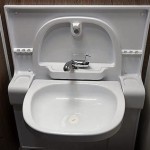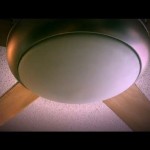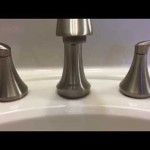21-Inch Wide Bathroom Vanity Units: A Comprehensive Guide
Bathroom vanity units are essential components of bathroom design, providing storage, functionality, and aesthetic appeal. When space is limited, as is often the case in smaller bathrooms, powder rooms, or en-suite bathrooms, choosing the right size vanity becomes crucial. 21-inch wide bathroom vanity units are specifically designed to address this constraint, offering a compact solution without sacrificing essential utility. This article provides a comprehensive overview of 21-inch wide bathroom vanity units, exploring their benefits, design considerations, material options, installation aspects, and maintenance requirements.
Benefits of Utilizing 21-Inch Wide Bathroom Vanity Units
The primary advantage of a 21-inch wide bathroom vanity unit is its space-saving design. In small bathrooms where every inch matters, a compact vanity allows for easier maneuverability and avoids overcrowding. This is particularly important in apartments, condominiums, and older homes where bathroom sizes are typically smaller compared to newer constructions.
Despite their smaller footprint, 21-inch wide vanities can still offer significant storage space. Careful design and clever use of internal compartments, drawers, and shelves can maximize storage potential. This allows for the organization of toiletries, cleaning supplies, and other bathroom essentials, keeping the countertop clutter-free.
Furthermore, these vanity units can be aesthetically pleasing and contribute to the overall design of the bathroom. Available in a variety of styles, finishes, and materials, they can be seamlessly integrated into different bathroom themes, from modern and minimalist to traditional and rustic. The availability of various countertop materials, such as granite, marble, quartz, and ceramic, further enhances the aesthetic possibilities.
Finally, the cost-effectiveness of 21-inch wide bathroom vanity units is another noteworthy benefit. Generally, smaller vanities are less expensive than larger ones, making them a viable option for budget-conscious homeowners or those undertaking bathroom renovations on a limited budget. This affordability extends to installation costs as well, which can be lower due to the unit's smaller size and easier handling.
Key Design Considerations for 21-Inch Wide Vanities
When selecting a 21-inch wide bathroom vanity, several design considerations should be taken into account to ensure the unit meets both functional and aesthetic needs. The first of these is cabinet style. Popular options include freestanding vanities, which stand on legs or a base, providing a traditional look; wall-mounted vanities, which create a floating effect and maximize floor space; and corner vanities, which are designed to fit into tight corners and optimize space utilization.
The choice of countertop material is another critical design consideration. Granite and marble offer durability and a luxurious appearance, while quartz provides a similar aesthetic with increased durability and lower maintenance. Ceramic and porcelain are also viable options, offering a wide range of colors and patterns at a more affordable price point. Laminate countertops are the most budget-friendly choice, but they may not be as durable as other materials.
Sink type also significantly impacts the vanity's functionality and appearance. Undermount sinks, which are installed beneath the countertop, create a seamless and easy-to-clean surface. Vessel sinks, which sit on top of the countertop, add a unique and modern touch. Drop-in sinks, also known as self-rimming sinks, are installed into a pre-cut hole in the countertop and offer a straightforward installation process.
Storage solutions within the vanity should be optimized for the specific needs of the user. Drawers are ideal for organizing smaller items, while shelves can accommodate larger toiletries and cleaning supplies. Consider incorporating features such as soft-close hinges and drawer slides to enhance functionality and prevent slamming.
Finally, the overall aesthetic should be compatible with the existing bathroom décor. Choose a vanity style, finish, and hardware that complements the other fixtures and finishes in the bathroom. Consistency in design elements creates a cohesive and visually appealing space.
Material Options and Their Characteristics
The material composition of a bathroom vanity unit directly affects its durability, maintenance requirements, and aesthetic appeal. Cabinets are typically constructed from wood, plywood, MDF (Medium-Density Fiberboard), or particleboard. Solid wood is the most durable option, but it can be more expensive and susceptible to moisture damage if not properly sealed. Plywood offers good stability and resistance to warping, making it a popular choice for vanity construction. MDF is a cost-effective alternative that provides a smooth surface for painting or laminating. Particleboard is the least expensive option, but it is also the least durable and most susceptible to water damage.
Countertop materials vary widely in terms of cost, durability, and aesthetic qualities. Granite is a natural stone known for its durability and unique patterns. It is heat-resistant and scratch-resistant, but it requires regular sealing to prevent staining. Marble is another luxurious natural stone with a classic and elegant appearance. However, it is more porous than granite and requires more frequent sealing. Quartz is an engineered stone that offers the look of natural stone with increased durability and lower maintenance. It is non-porous, stain-resistant, and scratch-resistant.
Ceramic and porcelain are durable and affordable options for vanity countertops. They are available in a wide range of colors and patterns, making them versatile for different bathroom styles. Laminate countertops are the most budget-friendly choice, consisting of a layer of decorative paper bonded to a core material. While they are easy to clean, they are less durable than other options and can be susceptible to scratches and water damage.
The choice of hardware, such as knobs and pulls, is another important material consideration. Metal hardware, such as stainless steel, brushed nickel, and chrome, offers durability and a modern aesthetic. Wood hardware provides a more traditional and rustic look. The finish of the hardware should complement the overall style of the vanity and the other fixtures in the bathroom.
Understanding the characteristics of different materials allows homeowners to make informed decisions when selecting a 21-inch wide bathroom vanity unit that meets their specific needs and preferences. Balancing cost, durability, and aesthetic appeal is crucial for ensuring long-term satisfaction.
Installation Considerations and Procedures
The installation of a 21-inch wide bathroom vanity unit can be a straightforward process for experienced DIYers, but professional installation is often recommended to ensure proper functionality and prevent potential issues. Before beginning the installation, it is essential to gather the necessary tools and materials, including a level, drill, screwdriver, measuring tape, pipe wrench, and sealant. It is also crucial to shut off the water supply to the bathroom to prevent leaks during the installation process.
The first step in the installation process is to remove the existing vanity, if applicable. This involves disconnecting the water supply and drain lines, unscrewing the vanity from the wall or floor, and carefully removing it from the bathroom. It is important to inspect the water supply and drain lines for any signs of damage or corrosion and replace them as needed.
Next, prepare the installation area by cleaning and leveling the floor and walls. Use a level to ensure that the surface is perfectly horizontal and vertical. If necessary, shim the vanity to achieve a level installation. This is crucial for preventing water from pooling on the countertop and ensuring that the drawers and doors function properly.
Position the new 21-inch wide bathroom vanity unit in the desired location and secure it to the wall using screws and wall anchors. Ensure that the screws are properly tightened to prevent the vanity from shifting or wobbling. Connect the water supply lines to the faucet and the drain line to the sink drain. Use Teflon tape to seal the connections and prevent leaks.
After connecting the water and drain lines, turn the water supply back on and check for leaks. If any leaks are detected, tighten the connections or replace the faulty components. Finally, apply sealant around the edges of the vanity where it meets the wall and floor to prevent water damage and mold growth. Allow the sealant to dry completely before using the vanity.
Maintenance and Care for Longevity
Proper maintenance and care are essential for prolonging the lifespan of a 21-inch wide bathroom vanity unit and maintaining its aesthetic appeal. Regular cleaning is crucial for preventing the buildup of soap scum, water stains, and other residue. Use a mild soap and water solution to clean the vanity surface, avoiding harsh chemicals or abrasive cleaners that can damage the finish.
Countertop materials require specific care depending on their composition. Granite and marble countertops should be sealed regularly to prevent staining and water damage. Quartz countertops are non-porous and require minimal maintenance, but they should still be cleaned regularly to prevent the buildup of dirt and grime. Laminate countertops are susceptible to water damage and should be wiped dry immediately after use.
The hardware on the vanity, such as knobs and pulls, should be cleaned regularly to remove fingerprints and smudges. Use a soft cloth and a mild cleaner to polish the hardware and maintain its shine. Inspect the hinges and drawer slides periodically and lubricate them as needed to ensure smooth operation.
Avoid placing hot items directly on the vanity countertop, as this can cause damage or discoloration. Use trivets or coasters to protect the surface from heat. Also, be mindful of sharp objects that can scratch the countertop or cabinet finish.
Regularly inspect the plumbing connections for leaks and address any issues promptly to prevent water damage. Check the sealant around the edges of the vanity periodically and reapply as needed to maintain a watertight seal.
By following these maintenance and care guidelines, homeowners can ensure that their 21-inch wide bathroom vanity unit remains in good condition for many years to come, providing both functionality and aesthetic enjoyment. Consistent care prevents costly repairs and extends the life of the investment.

The Monkton Vanity Unit Parker Howley

V Axg021 21 Azi Alexander In W X 34 4 H Bathroom Vanity Set

21 Inch Mdf Bathroom Vanity Cabinet High Glossy Painting Hangzhou Fame Industry Co Ltd

Adelina 21 Inch Antique Brown Finish Bathroom Vanity

21 Inch Vira Vanity Space Saving Powder Room Sink Finished Bathrooms Small Bathroom Interior

Vanity Unit With 2 Drawers 57 6x120x44 Cm P17 1055

21 Petite Powder Room Teega Bathroom Sink Vanity Cf 3006m Tk Bentoncollections

21 Inch Bathroom Vanity And Sink Cabinet Vessel Set Combo With Doors White Com

Home Decorators Collection Artisan 26 In W X 21 D 34 H Single Sink Freestanding Bath Vanity White With Black Marble Top Md V1749 The Depot

Fairmont Designs 1504 V2118 Smithfield 21 X 18 Inch Vanity In Medium Gray
Related Posts







